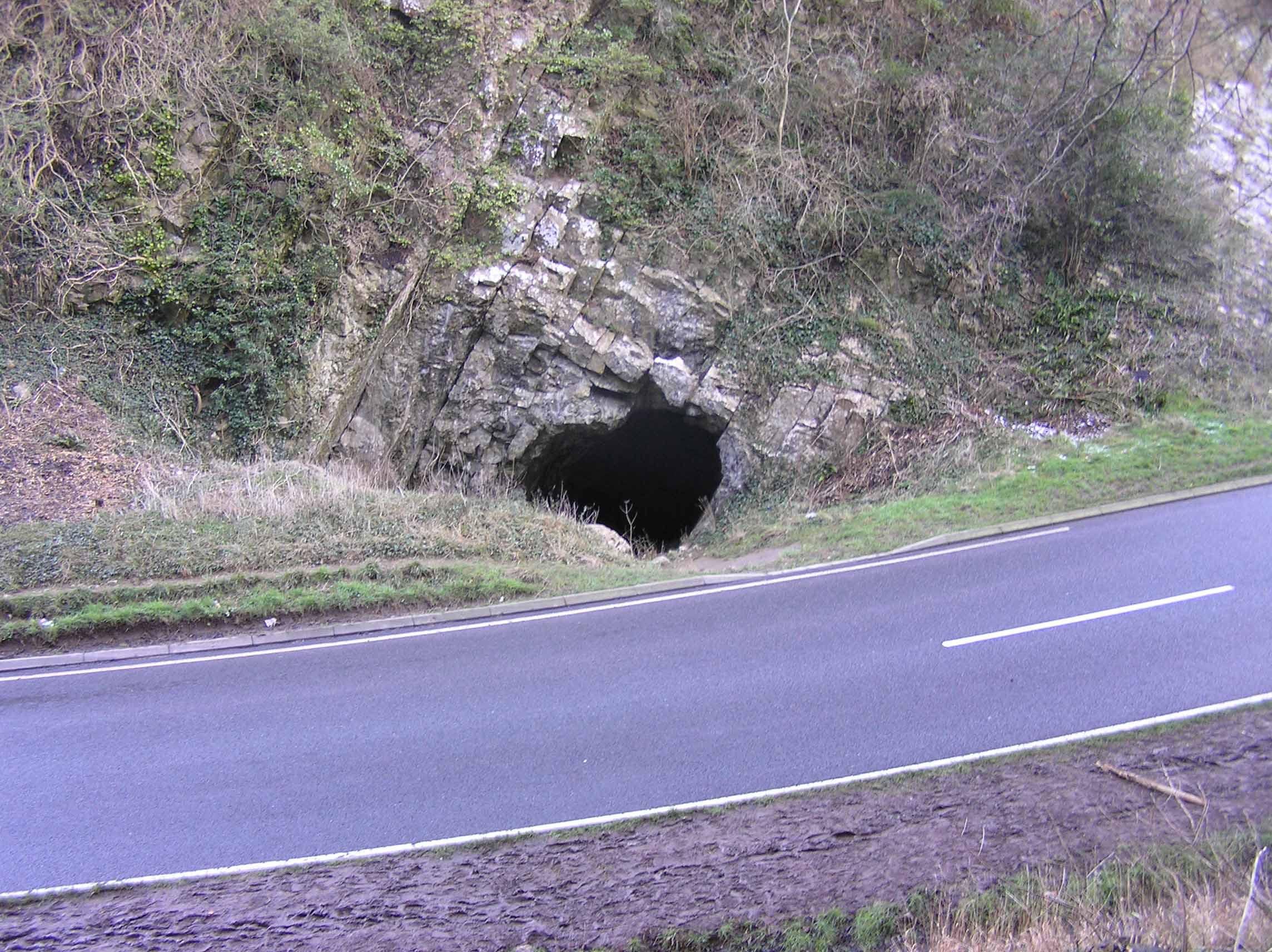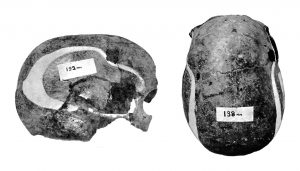
New samples taken for DNA analysis from human bone from Aveline’s Hole by Natural History Museum researchers have thrown up surprising results. Graham Mullan reports on their findings.
Aveline’s Hole, Burrington Combe, Mendip, contained the largest assemblage of Mesolithic human remains yet found anywhere in Britain. The cave was excavated in the 1920s by the UBSS and, despite losses during bombing raids on Bristol in November 1940, it still has the largest-known collection from this period. This was clearly demonstrated by a comprehensive report written by Rick Schulting of Oxford University and published in 2005. That report included 18 new radiocarbon dates which indicated that the site had been used as a cemetery for approximately 120 years during the Early Mesolithic, around 8,300 BC.
So when Ian Barnes and Tom Booth from the Natural History Museum wanted to take samples for DNA analysis, in order to set a Mesolithic baseline for their studies of later population movements into Britain from Europe (still a controversial topic today, 10,000 years later) the UBSS Museum was an obvious port of call. They visted, samples were duly taken and sent off for DNA sequencing.
What happened next was surprising – of the samples they took, some turned out to be more closely related to the incoming Neolithic farmers a few thousand years later, rather than having the expected affinities with Mesolithic hunter-gatherers. This caused something of a stir and the obvious way to resolve this puzzle was to get yet more radiocarbon dates on the recently sampled specimens.
This was done and, sure enough, those with farmer DNA proved to be about 4,000 years younger than those with hunter-gatherer DNA. So why were no farmers found when the 2005 study was carried out? More samples were analysed, more dates were acquired, a total of 14 in all, on top of the 18 carried out prior to 2005. And here’s the thing. It is standard practice, when sampling multiple specimens from one site, to ensure that the maximum number of individuals are studied and that none are sampled twice. in the earlier study, the dating was of left ulnae, as this was the most common skeletal element in the assemblage, but DNA researchers prefer to sample from the petrous bone, from the cranium, as this is the densest part of the bone and the most likely to yield ancient DNA. And these are where the new dates come from.
So, what we have when the dust settles is a large number of radiocarbon dates. Every single one from a post-cranial specimen was early Mesolithic, but of the crania, roughly half were early Mesolithic and half early Neolithic.

Having confidence that the data was correct, the next stage was to work out what it meant. The first and most obvious task was to research the possibility that there had been a mix-up somewhere post-excavation. Fortunately, despite the blitz, we do have pretty good records – including eye-witness testimony – of what has happened to the museum collections over time and we can be confident that not only was the possibility of mix-ups in-store very low but there was also no material of the right date and type, i.e. Neolithic crania, in the store for it to be mixed with. This was a genuine concern, as the new analyses did throw up one anomalous date, from a right temporal. This was shown to be part of the so-called “AH9” skull, now in Wells Museum, which was thoroughly investigated back in 2012, was shown to almost certainly have nothing to do with Aveline’s Hole and dates to around AD 1488-1650.
That leaves the archaeology. No finds of Neolithic age were made during the excavations. The flint was comprehensively described by Roger Jacobi in 2005; the latest specimens being two mid-Mesolithic flakes, all the rest and all other finds being attributable to either the early Mesolithic or the Late Upper Palaeolithic. However, our Neolithic forebears have form for this sort of behaviour, for example from Hay Wood Cave, also on Mendip, all the dated human material is Neolithic whereas the archaeology is either earlier – Mesolithic – or later – early Iron Age.
The implications of this work for future archaeological study are twofold. Firstly, it gives us a further insight into Neolithic burial practices, especially in the likelihood of finding Neolithic remains divorced from any contemporary archaeology. The second, and arguably the most important, is that it casts doubt on any analyses of skeletal material that does not include dating of all specimens. For example in the 2005 study, a study of the dental microwear showed that it seemed considerably less than might be expected for hunter-gatherers. the new dates suggest that at least some of the molars analysed are likely to be of Neolithic rather than Mesolithic age which could account for this anomaly.

And there is a final twist in the tale too. In order to glean as much comparative data as we could from the information available Chris Meiklejohn and Jeff Babb undertook a craniometric analysis on some measurements that had been taken in the 1920s on three specimens, skulls A, B and C, which were subsequently destroyed during the 1940 bombing. Only one of these, “A,” had enough data for a proper analysis and, again, it turned out to be remarkable as its most likely attribution is to the Upper Palaeolithic! It was always felt by the 1920s excavators that many of the ‘grave goods’ found in the cave were associated with two burials that were further into the cave than the rest and deeper in the sediment, but this could not be demonstrated as that part of the dig collapsed before it could be recorded and, possibly until now, no human remains could be specifically connected with them.
For those who would like to read the whole story, the journal, volume 28 (1) of the UBSS Proceedings, can be purchased by following this link.
Correspondent: Graham Mullan
